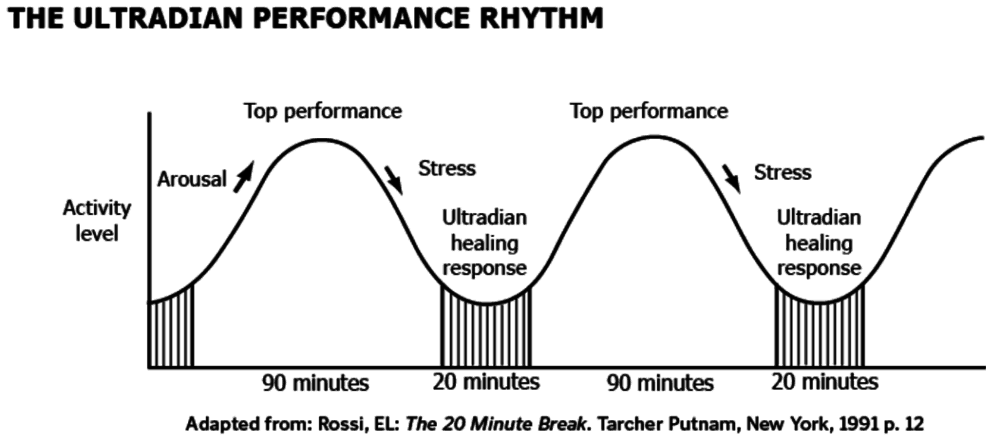Guys let’s face it, we all wish that we could be more productive, that we could get more work done in less time, so that we can guiltlessly waste the rest of our time. Therefore, in this article we’ll understand how our brain works, so that we can optimize the rewards for the efforts that we put in(not to be confused with Putin :P).
Let me start by narrating an incident in the life of Swami Vivekananda. Swami Vivekananda was an erudite Indian monk, philosopher, who was well versed in the ways of eastern as well as western philosophy. He was renowned for his insane powers of concentration. One such incident that describes his immense powers of concentration is as follows :
Swami Vivekananda was living the life of a wandering monk. During his wanderings, Vivekananda came to Meerut. Vivekananda was a great lover of books. In Meerut, he spent much time in reading, devouring a large number of books. At his bidding Swami Akhandananda, his brother disciple, would go to a local library every day and bring a big volume of Sir John Lubbock’s works and return it the following day. The librarian thought, that Swami Vivekananda was not actually reading the books but only, trying to impress everyone. One day the librarian openly expressed his doubt to Swami Akhandananda, when the latter came to collect another volume of Lubbock. Akhandananda reported this to Swamiji.
On hearing this, Vivekananda himself one day called on the librarian and said to him humbly: “Sir, I have gone through the books attentively, and if you have any doubt about it, you may ask any question you like from the books”. The librarian then asked a number of questions and Swamiji correctly answered all of them. The librarian was left astonished.
In order to be more productive, i.e: get more work done in less time, and therefore leave more time for leisure, we need to increase our ability to focus. The greater our intensity of focus, the more information can we absorb per unit time. However, in order to understand how to optimize our focus, we need to understand how our brain learns new information. But to understand how our brain works, we’ll have to use some nerdy terms. I have tried my best to limit their usage without compromising with the richness of information.
How our brain learns new information
Neurons are the fundamental building blocks of our brain and nervous system. All sensory inputs, outputs are stored and transferred through the neurons. Throughout one’s life time, our brain is repeatedly exposed to new information. As a result, the neurons repeatedly grow, form new connections and undergo reorganization.
While practicing a cognitively challenging skill, we need attention so as to activate a set of neurons, so that new neural connections can be formed and the existing ones can be strengthened. When you are learning, important changes take place in your brain, including the creation of new connections between your neurons. The more you practice, the stronger these connections become. As your connections strengthen, the messages (nerve impulses) are transmitted increasingly faster, making them more efficient . That is how you become better at anything you learn, whether it is playing the guitar, coding or becoming a meme lord.
The different biological processes in our body have different biological clocks, each following it’s own rhythm. The two main rhythms are Circadian Rhythm and Ultradian Rythm. Biological processes that follow circadian rhythms, repeat approximately every 24 hours. Whereas, biological processes that follow ultradian rhythms occur multiple times per day.
Interestingly, our learning period follows ultradian rhythm. Like all rhythms, the ultradian rhythm has its ebb and flow. Therefore, in order to maximize our productivity, we need to better understand the ultradian rhythm, so that we can adjust our work schedule according to our body clock, to get the maximum bang for the buck.
Understanding ultradian rhythm to maximize productivity

The learning period, that follows ultradian rhythm, repeats itself multiple times during the day, with the period of initial arousal, a phase of top performance, after which we start feeling stress as a result of exertion, then an ultradian healing response follows.
The initial period of arousal lasts for 5-15mins during which we feel a massive struggle in our head. During this time, we want to give up but persistence during this phase leads to a “flow” state. During this flow state, we lose track of time, the work feels to be seamless. This period can be considered as a phase of top performance. While still at the period of top performance, our biological learning rhythm reaches a peak and starts to decline thereafter. After the the top performance phase, fatigue starts to set in, we start feeling tired, as a result of which stress starts to accumulate in our body. We start feeling tired, frustrated etc. This downward flow of emotions is an indication from the body, that it want us to rest and recuperate.
The above ultradian cycle for cognitively demanding tasks, ranges from 60 – 120 minutes, followed by a period of fatigue. During that burst of energy, the body is amped up to yield to you maximum rewards for your efforts. Whereas, during the low point of the cycle, you have to work against your body’s natural rhythms to accomplish anything, which is akin to fighting a lost battle. During the period of fatigue, a period of deep rest, helps us to retain the maximum information, that we just consumed. According to Dr. E.L Rossi, a world renowned psycho therapist, the optimal period of deep rest should atleast be for 20 minutes, which helps in strengthening neural connections.
It is important to note that depending on one’s genetic makeup, everybody has different time periods for the ultradian cycles. Which means that while some one’s ultradian rhythm may repeat in 60 minutes, other’s ultradian rhythm may last for 90 mins. Therefore, find your cycle, adjust your work schedule accordingly, while also allotting regular periods of deep rest sessions in between.
Its quite clear by understanding the body clock that most work can be done when working in short but intense bursts, Apparently, to be the most productive and to get maximum rewards for the efforts we put in, its better to have the energy of a hare and not the tortoise.
If you liked the above article, you will also like : Why growth and not success should be the goal of life !
Subscribe to our Weekly Newsletter to be the first one to receive the latest updates from The Fitonation Blog, delivered directly to your inbox.
Also, don’t forget to check out our YouTube Channel by clicking on the following link : Fitonation YouTube Channel.
You can connect with us on Instagram, LinkedIn.
I would love to know your views on the above article. What can we do to improve? Your feedback is invaluable to us. Thanks for reading !


